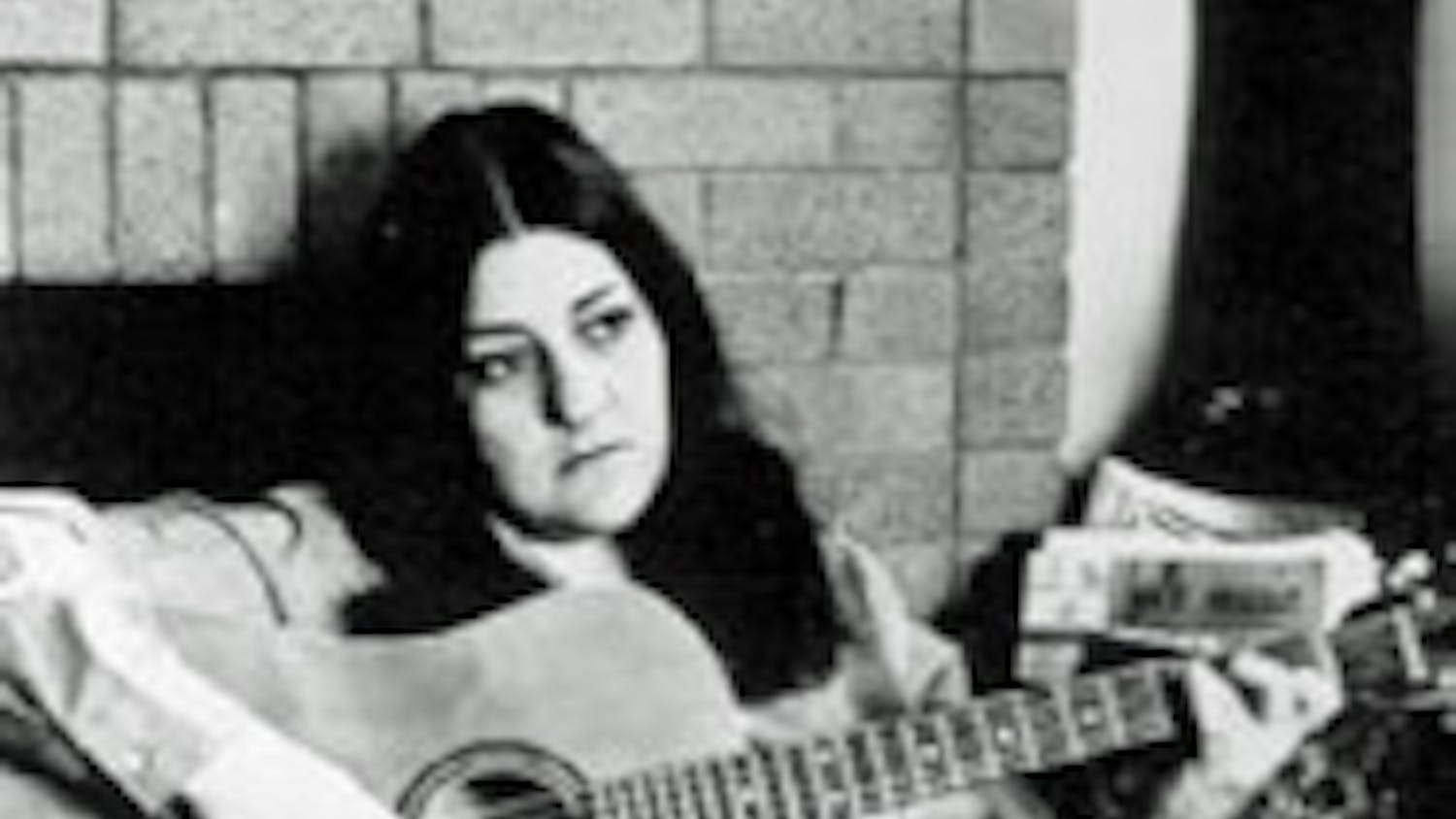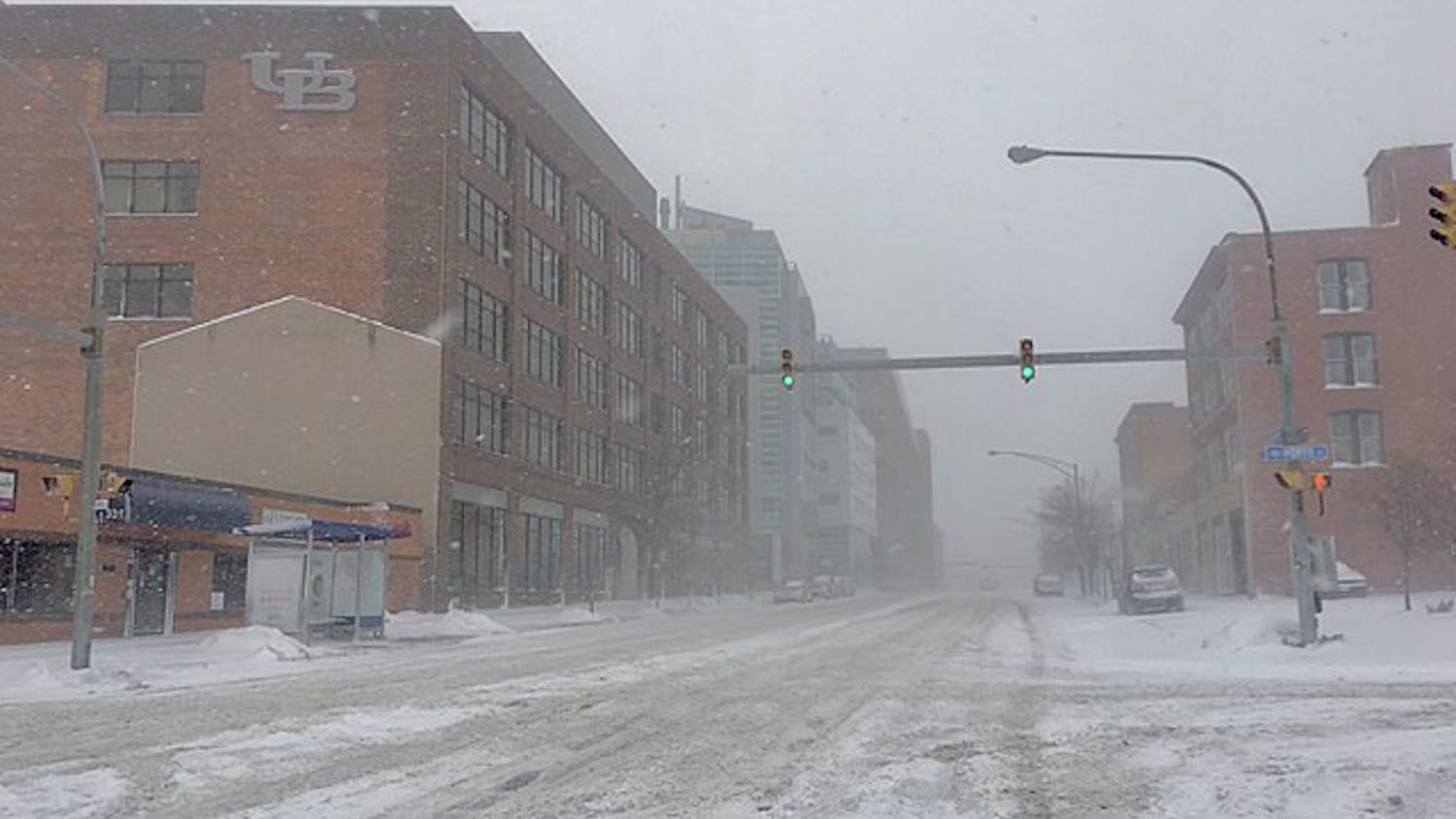Jonathan Katz, director of UB's visual studies doctoral program, stood on top of a table in a restaurant in California and shouted, "Ladies and gentlemen, I just want you to know that I'm being thrown out of this restaurant for the simple fact that I'm gay."
Katz expected to receive support from his audience. Instead, he was faced with atrocious slurs and people shouting, "die of AIDS" at him and his partner. The police were called and Katz and his then boyfriend were kicked out of the roadside diner.
This was not an unusual occurrence in California during the '90s, Katz said. He added that during that time, people who indentified as homosexual, transgender or bisexual could legally be kicked out of restaurants and other forms of public accommodation.
Katz, now 55, said he felt moved to become an activist for the LGBTQ community after the incident. He was angry and disturbed by the maltreatment; he was inspired to take a path toward fighting discrimination. His efforts have brought him to UB, where he hopes to instill the UB community with an understanding of the LGBTQ community.
"I feel discrimination in my bones, and when people are being mistreated, it bothers me," Katz said.
Katz was the first full-time American academic to be tenured in gay and lesbian studies. In 1994, he founded the Harvey Milk Institute (HMI), a queer studies institute, and he currently serves as the president of New York City's Leslie Lohman Museum of Gay and Lesbian Art.
Katz has taken steps to ensure members of the LGBTQ community are treated humanely. He wants to teach UB students to do the same and to educate them on the history of discrimination.
He has lectured about discrimination, the LGBTQ community and the importance of human rights for years.
Katz left HMI and began working at Yale University in 2002 as the director of the queer studies program. The university did not see a need for the program, Katz said. After working there for five years, he left the school because he felt the program was not receiving adequate support.
He wound up at UB - and he's thankful he did.
"My expectations [for Buffalo] were very low," Katz said. "What I found was a vibrant community with a progressive tradition, a very lively culture and a very lively queer culture."
Though he believes Buffalo is more accepting of the LGBTQ community than most places in America, the area is not particularly radical when it comes to LGBTQ activism, he said.
Katz believes UB is quite inactive in terms of political action regarding the LGBTQ movements happening around the country.
"People are not pushing for a queer studies major and minor field," Katz said. "Other campuses are doing that kind of stuff."
Though Katz is currently talking with other faculty members about potentially forming a queer studies program on campus, he doesn't think it will happen any time soon.
Katz's charge to educate and evoke change is also clear in the work he does with art.
As the president of the Leslie Lohman Museum, Katz works with gallery on its mission to preserve LGBTQ art and to help guests understand the history and language of the artwork.
"We use fine art that depicts the LGBTQ experience as a way of strengthening our collective understanding of what those struggles are," said Hunter O'Hanian, director of the museum.
Katz said UB students should expect to see the subjects in the museum mirrored in programs and lectures in the future. Katz wants to teach courses about feminists artists, like Amelia Jones, and people like Robert Rauschenberg, who lived in a time where the dominant artistic culture was abstract expressionism.
Katz has done work outside the New York City museum, too.
He was involved in "Hide/Seek: Difference and Desire in American Portraiture," a major exhibition known as the first to focus on gender and sexuality in American art.
Not many museums want to take the risk of touching on sexuality, he said.
"[Museums are] the real, 'don't ask, don't tell,'" Katz said.
When "Hide/Seek" was on display at the Smithsonian Institution in 2010, Secretary of the Institution Wayne Clough removed a video from the exhibition because of "powerful Republican legislators" threatening to take away some funding by applying budget cuts, according to The Washington Post.
Katz has taken it upon himself to challenge what he feels is the standard practice in the museum world of avoiding the subjects of homosexuality.
Katz's work in developing programming for lectures and exhibitions has brought international recognition to what he sees as the problem with some museums. It has been a continuous fight, but he believes society is witnessing a "whirlwind" of social change, he said.
"The last few years have been stunning," Katz said.
Katz believes there have been two factors that have aided social and cultural change: Everyone now has a connection with someone who identifies as LGBTQ and everyone recognizes that this movement is the last in a line of political and social change.
Regardless of how progressive some places are, other places haven't changed or have changed very little since the 1950s, according to Katz.
"Freedom in this country is not uniform," Katz said.
He believes it takes courageous people taking a stance and getting stepped on continuously before change is possible.
Katz knows what it's like to be stepped on.
In 1986, Katz and a group of protestors stood on the steps of the Supreme Court protesting a ruling that upheld the criminalization of homosexuality. Katz felt the decision in the case, Bowers v. Hardwick, set LGBTQ rights back 15 years.
He and his group of protestors were arrested and detained by a policeman who was being rough with Katz and his crew. But it was the sight of a 60-year-old woman who was part of the protest that changed the man's outlook. When the cop asked the women if she'd been arrested before, she said 'yes' and recited the dates of the African American, Women's Rights and Latino Civil Rights movements. She had been a part of every one of those protests since the 1960s.
"[The cop] got it," Katz said, "He didn't get it before, but [in that moment], he got it."
Katz has turned his passion into his profession to make sure others "get it," too.
email: features@ubspectrum.com





